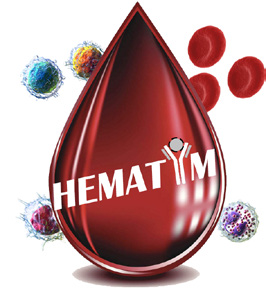Baseline [(18)F]FDG PET features are associated with survival and toxicity in patients treated with CAR T cells for large B cell lymphoma
Résumé
PURPOSE: Chimeric antigen receptor (CAR) T cells have established themselves as an effective treatment for refractory or relapsed large B cell lymphoma (LBCL). Recently, the sDmax, which corresponds to the distance separating the two farthest lesions standardized by the patient’s body surface area, has appeared as a prognostic factor in LBCL. This study aimed to identify [(18)F]FDG-PET biomarkers associated with prognosis and predictive of adverse events in patients treated with CAR T cells. METHODS: Patients were retrospectively included from two different university hospitals. They were being treated with CAR T cells for LBCL and underwent [(18)F]FDG-PET just before CAR T cell infusion. Lesions were segmented semi-automatically with a threshold of 41% of the maximal uptake. In addition to clinico-biological features, sDmax, total metabolic tumor volume (TMTV), SUVmax, and uptake intensity of healthy lymphoid organs and liver were collected. Progression-free survival (PFS) and overall survival (OS) were estimated using the Kaplan-Meier method. The occurrence of adverse events, such as cytokine release syndrome (CRS) and immune effector cell-associated neurotoxicity syndrome (ICANS), was reported. RESULTS: Fifty-six patients were included. The median follow-up was 9.7 months. Multivariate analysis showed that TMTV (cut-off of 36 mL) was an independent prognostic factor for PFS (p < 0.001) and that sDmax (cut-off of 0.15 m(-1)) was an independent prognostic factor for OS (p = 0.008). Concerning the occurrence of adverse events, a C-reactive protein level > 35 mg/L (p = 0.006) and a liver SUVmean > 2.5 (p = 0.027) before CAR T cells were associated with grade 2 to 4 CRS and a spleen SUVmean > 1.9 with grade 2 to 4 ICANS. CONCLUSION: TMTV and sDmax had independent prognostic values, respectively, on PFS and OS. Regarding adverse events, the mean liver and spleen uptakes were associated with the occurrence of grade 2 to 4 CRS and ICANS, respectively. Integrating these biomarkers into the clinical workflow could be useful for early adaptation of patients management.
Fichier principal
 E Marchal et al-2023-Baseline [18F]FDG PET features are associated with survival and toxicity in patients treated with CAR T cells for large B cell lymphoma.pdf (605.48 Ko)
Télécharger le fichier
E Marchal et al-2023-Baseline [18F]FDG PET features are associated with survival and toxicity in patients treated with CAR T cells for large B cell lymphoma.pdf (605.48 Ko)
Télécharger le fichier
| Origine | Fichiers produits par l'(les) auteur(s) |
|---|---|
| licence |




